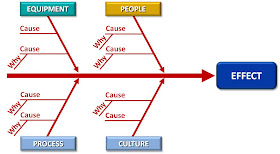 Will 2012 be the start of the long-awaited economic turnaround? The signs are encouraging, but we heard similar optimism this time last year. Yet many A/E firms have good reason to be hopeful, as their business prospects have already taken a significant upward turn.
Will 2012 be the start of the long-awaited economic turnaround? The signs are encouraging, but we heard similar optimism this time last year. Yet many A/E firms have good reason to be hopeful, as their business prospects have already taken a significant upward turn.However, the outlook for firms that largely serve state and local governments is less rosy, to be sure. Budget cuts at the state and local levels are projected to increase by 40% in fiscal 2012, according to one analysis. Federal infrastructure spending is expected to increase this coming year, but many firms will experience the opposite effect as the stimulus and base realignment programs wind down.
In any case, it's a good time to reevaluate your business development process. From my perspective, most A/E firms continue to do business development as usual despite dramatic shifts in the marketplace resulting from the financial crisis. Here are five valuable changes to consider in 2012:
1. Look deeper into clients' evolving needs. Over the past two years I've interviewed many of my clients' clients and I've seen a couple of important trends emerge from those conversations: (1) their needs have changed dramatically (or at least their ability to meet those needs financially) and (2) their A/E service providers are talking to them less since project funding has declined.
There's your golden opportunity--emerging, unmet needs and fewer competitors vying to meet them. I know, there's that little detail about their having little money to spend on A/E services. But even if the investment of your time with clients doesn't yield a short-term return, it may well pay generous dividends down the road. At the very least, don't ignore your own clients. Some of them are getting more attention from your competitors, the impact of which will be felt once the money starts flowing again.
But even if you're talking with clients, you may be overlooking opportunities to help. Besides the constraint of limited budgets, these emerging needs (financial, operational, planning, etc.) may not match your normal scope of services. It's time to get creative. Consider ways to repackage your services to better fit clients' needs. Partner with other experts where needed. Explore different models for compensation.
2. Systematize relationship building. Everyone in this business seems to understand the crucial value of relationships in building successful, sustainable companies. But surprisingly few firms have adopted a formal, consistent approach to initiating and maintaining these relationships. Firms that have relational BD strategies and key account programs in place can dramatically increase sales success, client retention, profit, and revenue growth.
Start this effort in the sales prospecting stage, with a shift from merely chasing projects to identifying clients with long-term relationship potential (or more likely, some combination of the two). Determine the traits that define desirable clients and screen prospects accordingly. Then follow a sales process that is more relational than transactional in nature, with an emphasis on serving rather than selling.
For existing clients, implement some kind of key account program if you haven't already. Or strengthen the one you have in place. At a minimum, this should include the top 20% or so of your clients that produce 80% of your revenue (if the proportion is much less than 20%, then you really need to be doing this!). You might consider determining where in the "client relationship life cycle" each of your significant clients sit, and define an action plan for each to try to move them to the next level.
3. Commit to never wasting a client's time. Most of what is done during the sales stage is decidedly skewed toward the seller's interest rather than the buyer. We all recognize this when we're in the buyer's role, but somehow become desensitized to it when thrust into the sales role. By default, we tend to act like salespeople, adopting some of the very practices and motivations we detest as buyers.
Enough! The best way to distinguish your firm during the sales process is not by selling, but by serving. This includes avoiding the usual self-serving sales calls that offer little of value to clients. I advocate never making a sales call without presenting your "entree," something of value (usually specific information or advice) in exchange for the client's time. Strive to consistently apply the Golden Rule to how you conduct the sales process.
4. Step up your marketing. In the mad rush to embrace social media, A/E firms have largely overlooked what makes social media work--valuable content. Simply having "access" via the internet means little if you don't have something to garner the attention and interest of a devoted audience. That's why, if you're like the average firm in our business, your marketing plan for 2012 needs to describe how you are going to substantially improve your creation and use of content.
You'll see this trend reflected in the top marketing tactics identified by a consensus of several recent studies. Assess your own marketing strategy relative to these tactics and determine how to improve significantly in at least a few of these this coming year. Your biggest challenge will probably be generating enough good content to support these tactics. This earlier post offers some suggestions; use the adjoining search bar to look for ideas relative to specific tactics.
5. Do fewer, better proposals. The first part of this advice may not apply to your firm, but most firms, in my experience, would benefit by being more disciplined in which proposal opportunities they pursue. The volume approach practiced by many A/E firms clearly doesn't work. It reduces the win rate and drains valuable staff time from more productive BD activities. This previous post describes some steps for reining in the "proposal monster."
Every firm can do better proposals and, to be frank, most are quite mediocre at it. Of course, the best way to improve your chances is to position your firm with the client before the RFP comes out. Then there are two ways that stand out in distinguishing your proposal from virtually everyone else's--(1) making it truly client focused and (2) designing it to be skimmable. The latter assumes that what's skimmable is at a minimum your proposal's core theme and key messages. Again, I've written much more on this topic that you can locate by using the search bar.
So, five business development goals for 2012 that every firm should find applicable--and valuable. Whatever your firm's prospects are for the coming year, these are ripe opportunities to get the jump on the competition and enhance your success in the new year.















